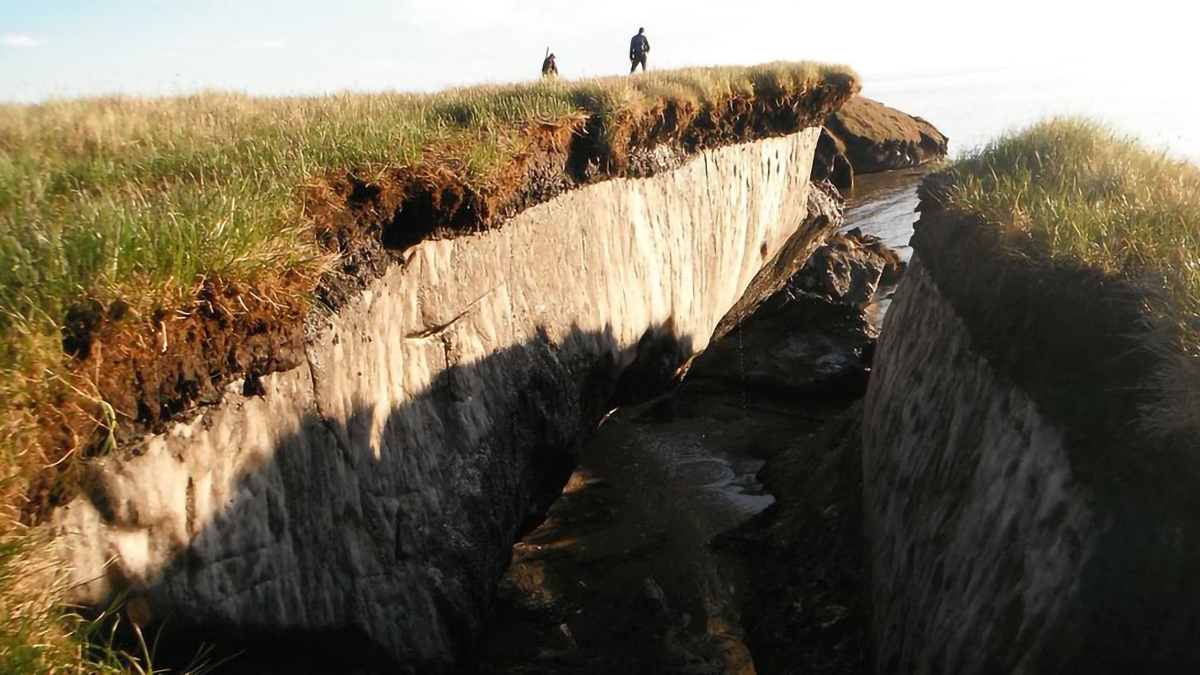Climate change is forcing the evolution of risk
Renaud Guidée says 2022 was a turning point for the industry
Recent years have shown that the ‘unthinkable’ really can happen, says Axa's chief risk officer Renaud Guidée
Axa was the first financial services institution of any kind to announce its intention to stop investing in coal, which is responsible for 46% of global CO2 emissions.
 Renaud Guidée, chief risk officer, Axa
Renaud Guidée, chief risk officer, Axa
Two years later, in 2017, the French insurance major widened its exit from coal to include underwriting.
But 2022 was a turning point, according to its chief risk officer, Renaud Guidée, because it was the year when the experts surveyed in Axa’s Future Risks Report said climate change had become the highest risk globally – followed by geopolitical, cyber and pandemic.
“Our latest Future Risks Report showed that climate change is the number one concern for our risk experts around the world. It was the first time ever that climate risk topped the chart across all geographies,” Guidée says.
He explains there are three sub-sets to climate risk.
Physical risk is the financial impact of climate change from more frequent extreme weather events, and from environmental degradation, including air and water pollution, biodiversity loss and deforestation.
Transition risk relates to the financial loss from adjusting the global economy and society to a lower-carbon world, and a more environmentally and socially sustainable system.
Liability risk stems from legal claims arising from the behaviour or lack of action by insureds.
“These three types of risk together are how we comprehend climate risk as a whole, and they are creating a shift that requires us to be nimble, especially with how we manage our balance sheet,” Guidée says.
Transition and pivot
The responses to climate change are also made up of three “complementary buckets” – mitigation, adaptation and resilience, and nature-based solutions.
“It is our fiduciary duty to do whatever it takes to assist the mitigation of climate change. That means curbing the carbon footprint of both our underwriting and investment portfolio, which is instrumental to our strategy at Axa,” Guidée says.
Axa aims to exit coal by 2030 in Europe and other member states of the Organisation for Economic Co-operation and Development, and by 2040 in the rest of the world. It is 90% of the way towards achieving that target, Guidée says.
The word “transition” describes the move to net zero, but it has also been adopted by oil and gas producers who invest in renewables while also investing in new fossil fuel projects. Acknowledging the word “transition” may be viewed as covering two different topics, Guidée describes the change among these companies as a “pivot”.
“It is our fiduciary duty to do whatever it takes to assist the mitigation of climate change. That means curbing the carbon footprint of both our underwriting and investment portfolio”
Renaud Guidée
Axa
Guidée, who is chair of the Net-Zero Insurance Alliance, says: “Semantics do matter and sometimes ‘transition’ can be a source of confusion.”
He explains: “The Paris Agreement is a legally binding target to transition to net zero by 2050 and Axa is committed to its part in delivering on that. When it comes to fossil fuel companies, rather than ‘transition’, I would call it a ‘pivot’ towards more renewable energy.”
He continues: “We at Axa are putting pressure on oil and gas companies to be part of the solution because a gigantic step-change to renewable energy capacity requires massive capital, which could come from redeploying their cashflow. In addition to their financial firepower, that pivot also means retraining and retooling their engineers to work on renewable and sustainable energy projects.”
Axa will not insure any new greenfield exploration projects for oil unless they are carried out by a “credible player” committed to “massively investing in renewables and reducing the addiction to fossil fuels”, Guidée says. Axa continues to insure projects using natural gas, which is “accepted by public authorities as a transition energy”, he adds.
Such “credible” oil and gas companies form “a very narrow group”, he stresses, and it is important to continue covering their liabilities, not least in case of accidents at their future solar photovoltaic and wind power projects.
He continues: “By working only with those oil and gas insureds who are credibly pivoting their business model away from fossil fuels and towards renewables, and by stringently applying our biodiversity-related restrictions, especially for the UN’s World Heritage Sites, we are embedding climate risk into our underwriting. All our underwriters are forcefully applying Axa’s technical guidelines, relating to the selection, writing and pricing of risk, which is key to decarbonising our portfolio.”
Pre-underwriting phase
Axa complements these efforts, he adds, by working with its insureds on the prevention of climate risk.
“For instance, we advise them on the carbon footprint of their manufacturing, such as where they locate a factory to reduce its exposure to storms and floods. This is part of our pre-underwriting phase, which means defusing the potential existence of risk.”
Guidée’s native France relies on another source of low-carbon energy for nearly 70% of its electricity – nuclear power – and Axa is an “active contributor” to insurance pools that cover this sector’s liabilities.
“Nuclear energy is not renewable because of the depletion of uranium and all the raw materials it requires, but it ensures clean air, and with the right sustainability framework, it can help disentangle society from fossil fuels and at the same time ensure energy security,” he says.
On adaptation to climate change, Guidée highlights government-sponsored pools, such as Caisse Centrale de Réassurance (CCR) in France, which covers losses caused by natural catastrophes, the National Flood Insurance Program in the US and Flood Re in the UK.
“By working only with those oil and gas insureds who are credibly pivoting their business model away from fossil fuels and towards renewables, and by stringently applying our biodiversity-related restrictions... we are embedding climate risk into our underwriting”
Renaud Guidée
Axa
“Such mechanisms are welcome because they not only pool resources between private insurers and reinsurers but also manage the loss when it becomes systemic,” Guidée says.
Adaptation also presents an opportunity to use insurance tools and, in 2006, Axa issued its first parametric insurance policy. This was done with the World Food Programme to cover droughts in Ethiopia.
In 2014, Axa created a parametrics team within its Corporate Solutions division and, three years later, it established a separate, standalone entity, Axa Climate, dedicated to creating and pricing index-based solutions.
Axa has also made “forceful commitments” to biodiversity because, just as environmental, social and governance (ESG) “does not boil down to E”, Guidée says, “neither is the E limited to climate”.
Axa has thus collaborated with Unilever and Tikehau Capital to create a private equity impact fund. Guidée describes the plan, unveiled in May 2022, as an effort to “accelerate and scale” a regenerative transition in agriculture. The three partners aim to invest €100m ($109.9m) each, and combine a unique set of industry, risk and financial expertise to drive structural change.
Three drivers of losses
Risk modelling is evolving to incorporate climate change thanks to the three key drivers of losses from natural catastrophes, Guidée notes. These are hazard, exposure and vulnerability.
Axa’s internal analyses suggest by far the biggest driver of changes in losses over the past 10 years has been from changes in exposure.
These changes have been generated by rising property values, economic growth and population dynamics, among other things. Axa expects exposure factors to continue to change at faster rates than hazard and vulnerability over the coming decade.
A hazard is the frequency and intensity of an extreme weather event, such as storms, floods and heatwaves. This accounts for 20% of the total increase in insured losses from natural catastrophes over the past 20 years, Guidée says.
Exposure is the value of what it insured – what is indemnified in the event of a loss – and accounts for 60% of the increase. Its share is that high for two main reasons – the “concentration of GDP” in coastal areas, he says, and low interest rates that have boosted the value of property and related assets.
The remaining 20% falls to vulnerability, which is “somewhat overlooked” by many stakeholders, he says, despite being a key driver of risk. Vulnerability concerns land zoning, urban planning and building codes. For example, when Axa reviewed flooding that hit the French Indian Ocean territory of La Réunion in 2018 (pictured), it found better construction planning could have made the insured losses “100 times lower”, he says. Improvements to flood defences in New Orleans, he continues, meant losses from Hurricane Ida in 2021 were 10 times lower than those from Hurricane Katrina in 2005.
“We make sure that our risk modelling encompasses all these three dimensions to pull the right levers,” Guidée says.
Evolution of risk
Climate change is driving the evolution of risk management, he says.
“The role of risk managers over the next decade is to be ever more robust and agile, to be on the lookout for new threats that are emerging. Be rigorous but also be creative, because it’s not about implementing a blueprint or a rulebook, but about factoring ‘blind spots’ into contingency plans so that you are ready to devise new solutions in response.”
Guidée concludes: “There’s a natural tendency for the human mind ‘to fight the last war’ but, actually, what comes next is most likely to be something we have not lived through before. What we’ve all learned from the past few years is that ‘the unthinkable’ can definitely happen.”





